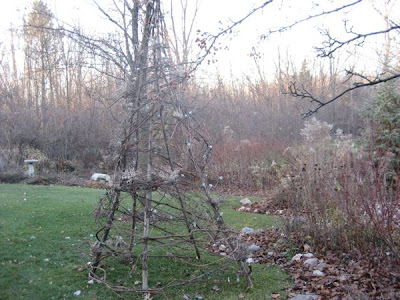
In early October, Tom and I took a 10-day vacation to 4 cities in Canada. We dropped our car off in Stratford, Ontario, and then took the train to Kingston (by New York state), then Montreal, and finally to Toronto. We have done train travel before and find it fits us very well. Unlike car travel, we can sleep or read, and there is no 2-hour wait at an airport like plane travel. Besides, the leg room is to die for.
But can I suggest one more hidden benefit? Sometimes you meet the greatest people. Once, when I was traveling alone to Milwaukee, I sat next to a man who worked for a major TV news organization, and spent many hours discussing the changing role of media today. I had such an occasion once again on this trip. This time, Tom and I boarded a crowded train from Kingston to Montreal and couldn't find 2 seats together, and finally settled across from each other on aisle seats. My seat mate was an elderly gentleman who welcomed me with a warm smile. I noticed that he was wearing some sort of a uniform jacket and that the jacket was decorated with numerous medals. I assumed he was a veteran. Almost immediately, he began speaking with me, friendly sort that he was, and since I love meeting new people we quickly got to know each other. His name was Arthur Brough and he was from England, but was currently in Canada visiting a niece. He was to turn 90 on October 24th, and was heading to Montreal to catch the plane back to England for his party.
I asked Arthur about his history in the armed forces, and he told me a fascinating story about his time in the army in WWII. He told me, in fact, that he had been a prisoner of war in Poland for 5 years. He said that he had put down his remembrances into a book. I told him that I certainly would love to read that book, at which point he reached into his bag and pulled out a book titled 'My Wasted Years - 1940-1945'! Would you mind, I asked him, if I read it right now? He was delighted to have me read his story, so I spent the next 3 hours or so reading Arthur's story, pausing to have him clarify points. I can't tell you all of the details of his story, but he was captured in France, taken to Poland via cattle car, and taken to a main stalag (Stalag 13, in fact), where he was put on various work details and sometimes sent out to Polish farms. He tried to escape numerous times but was never successful. Two things I'll remember about his story: First, he had an uncanny ability to remember the food he received from the Red Cross or kind Polish citizens (he mentions any special food in great detail), probably because he was half-starved most of the time. Also, I was struck by the kindness shown by British soldiers to their guards. When they received food packages from home (yes, they did get through), they would share the food with their guards because, he said, that was the British thing to do. I wonder if I would be so generous.
After he was liberated by the Americans in 1945, he married a young woman named Vera and worked as a crane operator. He and Vera had no children, and he lost her 5 years ago. As he told me this, he pulled a small locket from inside his shirt. On one side was a photo of Vera, probably taken at the time of their marriage, and one the other side was his photo. He had to wipe away the tears when speaking of her.

So there is my train travel story. Tom took a photo of us before we got off the train, and I promised Arthur I'd send it to him. He gave me an address card with a picture of him and Vera on the front. Tomorrow I'm making a special batch of my chocolate chip cookies, and I'll send them along with the photo for his birthday. After all, he really does love packages of special food.




























